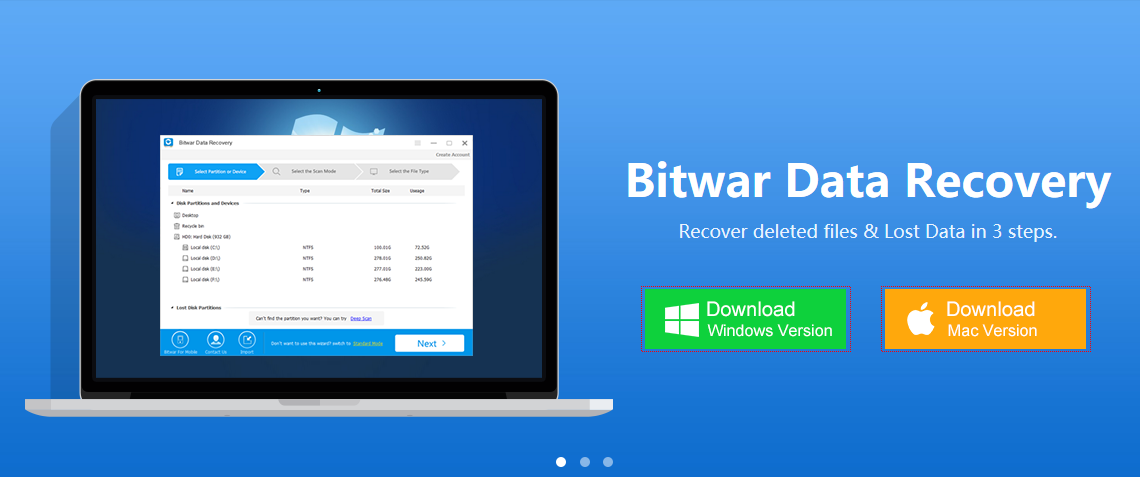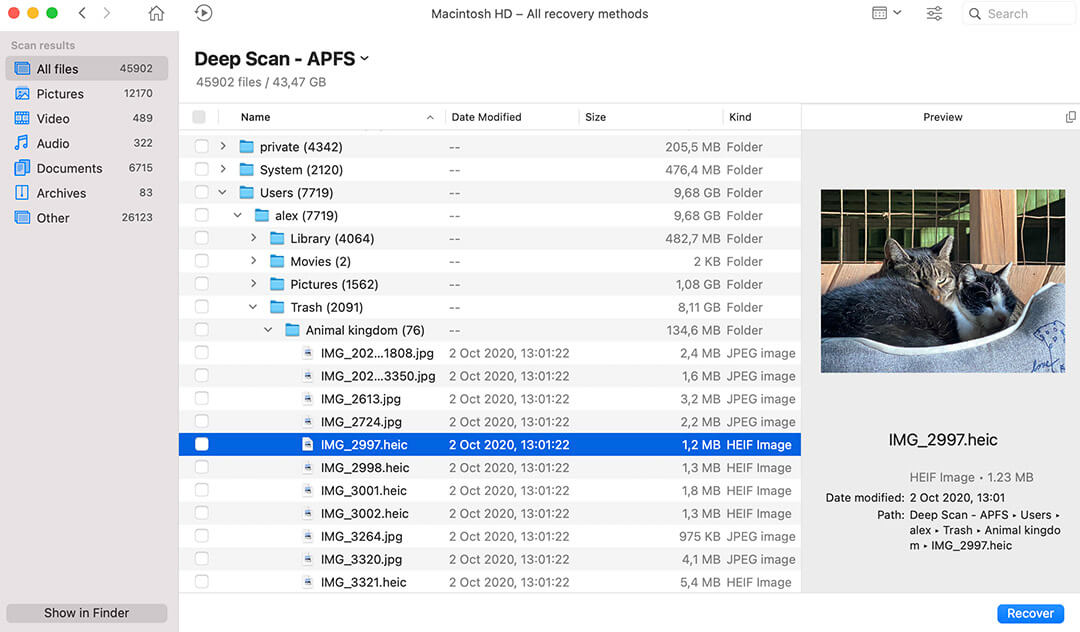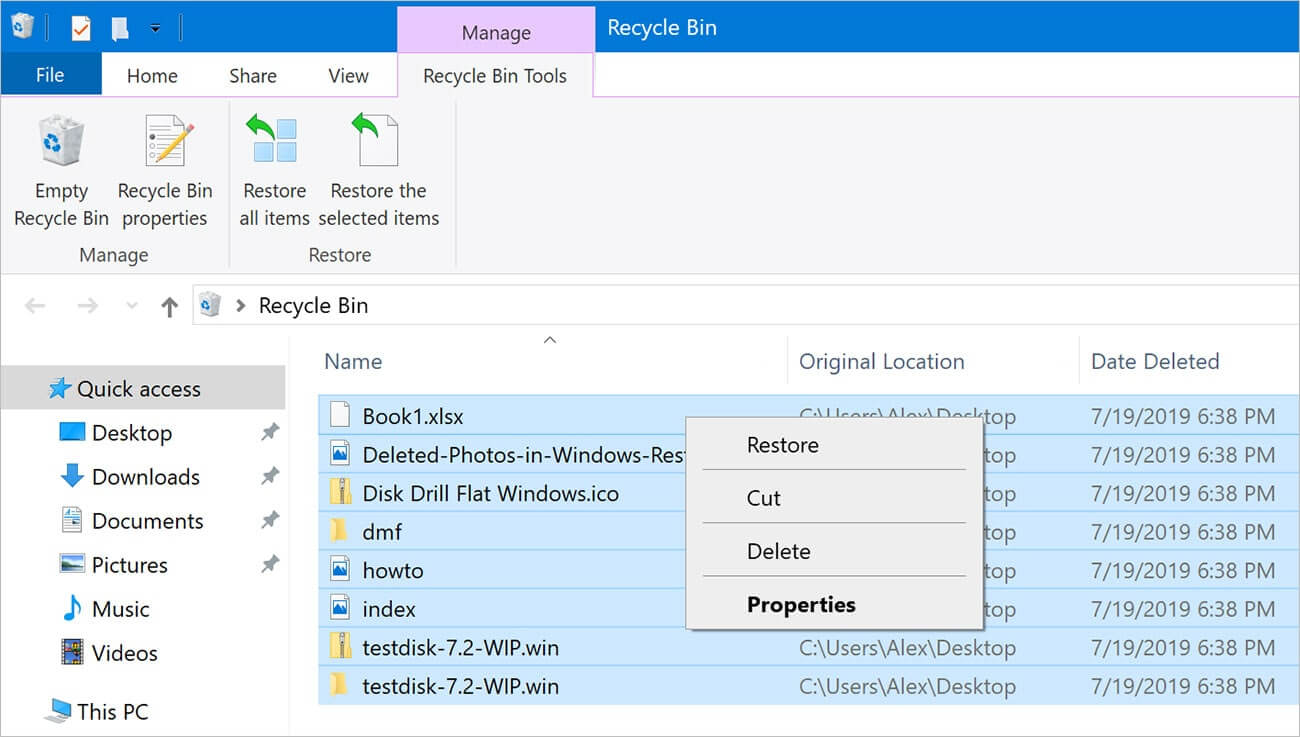How To Recover Trashed Files On Mac For Free
In this article, you will find several ways you can restore and recover your deleted files on Mac, ranging from the easy level of difficulty to “hard to recover from”. Here’s What You Need to Do to Retrieve Your Deleted Files. Recover files manually when you haven’t emptied the trash bin. Mar 29, 2021 How to recover the Trash on Mac: Open the Trash Can by clicking on its icon. Locate the items you wish to recover. Drag the files out of the Trash to the desktop or another folder. Alternately, select an item, right-click, and choose Put Back. Recover Deleted Files Using Mac Terminal. Difficulty: High Chance of success: Moderate Requirements: The deleted files are present in Trash. The Mac Terminal program provides an alternate method of recovering files from your Mac’s Trash. It is a command line way to recover recently deleted files from your computer. Download Disk Drill for Mac. Launch the application. Select the hard drive that you want to scan for your emptied trash. I need to recover some screenshots along with a Boosted Board Ride that I went on. During that ride, I took the most beautiful picture of the sunset. Jan 09, 2020 Recover Emptied Trash on a Mac for Free without Software There is really only one way to recover deleted files from an emptied Trash Bin without using file recovery software. You need to restore the missing files from a backup taken before the file was permanently deleted from the machine.
It’s happened to everyone at least once: You accidentally select a file and move it to the trash or unintentionally delete data that you urgently need. So what do you do if a family photo or important documents wind up in the Trash on your Mac? Fortunately, there are several ways to recover deleted data in macOS.
On every Mac, deleted files are first sent to the Trash. If the files are also deleted in the Trash, a copy is saved on the hard drive of your device. This copy is not overwritten by other data until later. In other words, even if you’ve already emptied the Trash, your data is not necessarily lost. In this guide, we’ll explain how to restore deleted data on your Mac, either from the Trash, an old backup, or directly from your hard drive.
Mac: recovering deleted files – a step-by-step guide
When you delete data on your Mac, it is first moved to the Trash. As long as the Trash has not been emptied, you always have the option to manually restore files from the Trash on a Mac. To do this, proceed as follows:
Step 1: Open Trash
Double-click the Trash icon in the dock. You’ll see a list of all files that are still in the Trash on your Mac.
Step 2: Select the file and move it to the desktop
To restore a file, double-click it and select “Put Back”. Alternatively, you can drag and drop the file back to the desktop or into another folder.
How To Recover Trashed Files On Mac For Free Software
Did you delete a file on your USB flash drive or external hard drive? These devices have their own Trash, which is hidden. You can use a command to show this folder as well as other hidden files and folders on a Mac.
macOS: recovering deleted files using Time Machine
Time Machine is a native macOS application that automatically creates backups. These backups allow you to restore deleted files on your Mac in an emergency. Once configured, Time Machine backs up your applications and settings as well as other personal files at regular intervals.

You should create backups of your Mac regularly to prevent unwanted loss of data.
All you need is an external storage device such as an external hard drive or a USB drive with sufficient storage space. After connecting the device to your Mac, set up backup/recovery as follows:
Step 1: Configure Time Machine

Go to System Preferences and select the Time Machine backup application. Click “Select disk”, enter your storage device, and specify how often you want the application to create backups.
Step 2: Restore the file from an old backup
Open Time Machine. The easiest way to find this application is by using Spotlight. Go to the date of the backup you’re looking for and open the deleted file in the appropriate folder.
Recovering permanently deleted files on a Mac using Disk Drill
What if you can’t recover the deleted file from the Trash or using Time Machine? Fortunately, files that have apparently been permanently deleted can often be recovered on a Mac and are not necessarily lost forever. macOS stores files on the local hard drive until they are overwritten by other data. With special data recovery software and a bit of luck, you can locate and restore lost files on your hard drive.
For example, you can use a program called Disk Drill. This data recovery software scans your hard drive for deleted files that have not yet been overwritten by the system. The faster you react, the more likely it is that you can use Disk Drill to recover the file you want.
Even Downloading or installing Disk Drill could overwrite data on your hard drive. To be on the safe side, first download the software onto an external device such as a USB drive.
The free version of Disk Drill allows you to search your hard drive for deleted data. However, you need the full version to actually recover your data. Nonetheless, Disk Drill is useful for locating files that you think are lost. Once you’re certain that the file is still in your system after scanning your hard drive, you can download the full version and restore the deleted data on your Mac.
Step 1: Install Disk Drill and scan your hard drive
Install Disk Drill. Note that you need to give the application access to your hard drive. Then launch the application and click “Recover” next to the icon for the hard drive with the data you want to restore.
Step 2: Recover data
Once you've found the file you want to recover, right-click “Recover” again and select the directory where you want to save the recovered file.
If you’re using a Microsoft operating system, you also have a range of options for restoring deleted files from the Windows Recycle Bin.
'Is there any app can recover files (emptied trash) from Mac? Since I was really on a hurry deleting stuff, I accidentally deleted some important files and then cleared the trash bin on my Mac book.'
As we all know, recovering trash on Mac is very easy. Once files are deleted, they are automatically saved in the Trash folder. Simply drag or select 'Put Back' to undelete them. But, how to recover emptied Trash on Mac?
Note: You can stop when emptying trash on Mac by the path in the Trash: File > Edit > Undo Move (Command + Z)
Tip 1. Check if the Deleted Files still Exist in other Mac Locations
Of course, you may have created a copy of the emptied trash files before, such as a memory card, a USB memory stick, an external hard drive, and so on. Also, if you have accepted or delivered the file on phone or removable media, you can recover deleted items. Please note that email is also where you need to view it.
Tip 2. Recovering Empty Trash on Mac from Backup
If you have the habit of regular backups, you are more likely to recover deleted trash on Mac. Because important files you delete may exist in Apple's Time Machine backup. Time Machine can automatically sync your files at a fixed frequency after setting it once.
Step 1. Launch 'Time Machine' on your Mac.
Step 2. When asked how to transfer files, select the first one from 'From a Mac, Time Machine Backup or Boot Disk' 'From a Windows PC' and 'To another Mac'. Then click 'Continue'.
Step 3. Click 'Backup' to confirm you action and click 'Continue'.
Step 4. Select the appropriate backup based on the date and time. Then click 'Continue'.
Step 5. Select specific files and click 'Continue' again to start the transfer. After waiting for a while, you can check the files on your Mac.
Tip: The best way to avoid this issue is that you'd better backup your important files regularly.
How To Recover Trashed Files On Mac For Free
Tip 3. Ultimate Solution for Mac Emptied Trash Recovery
The above methods may not be helpful for you. Except for them, now, professional Mac Trash recovery software-- FoneCopeAnyRecover comes to help you recover files deleted from trash on Mac.
Why AnyRecover can Recover Empty Trash Mac?
When you delete files and empty Trash folder, it is equivalent to permanently delete the files, so why can you retrieve them? The file you deleted is only marked as writable, and it actually exists in the disk sector. New data you write will be assigned to this area first. Therefore, the most sensible way is to temporarily stop using the Mac to increase recovery opportunities.
Detailed Steps for how to recover trash on Mac

Step 1. Start your Mac, then install and launch AnyRecover. Now, select the 'Recycle Bin Recovery' mode on the main screen.
Step 2. You can choose from the 'Photo, Audio, Video, Document, Archive, and Other' file types as needed. Then click 'Scan' to begin the probing process.
Step 3. When the quick scan on empty Trash Bin is completed, all deleted files will be displayed in order on the interface.

Step 4. After prereviewing all the files, mark items you need to recover and click 'Recover' in the lower right corner.
Why AnyRecover Is Better than Others?
1. Its price is reasonable relative to its value.
2. Excellent support team can solve many problems of users.
3. The wonderful software can even recover Mac files that were deleted long ago.
4. It can recover almost all content such as restoring unsaved Excel on Mac, retrieving Word documents Mac from trash and recover unsaved PPT on Mac.
5. This recovery tool has an ultra-fast running speed, including scanning and recovery progress.
6. It can recover data on the formatted USB drive, disk and external hard disk, and even save the problematic disc data.
7. The design of scanning after determining the file search criteria is user-friendly.
8. Compatible with all storage devices.
9. For those who don't know the technology, this is the perfect software.
10. It provides very good performance and flexibility.
11. It achieves an ultra-high recovery rate based on an advanced depth scanning algorithm.
The Bottom Line
This article describes 3 ways to recover deleted and emptied Trash on Mac. After reading this article, you will have a direction to get out of trouble after you accidentally empty the Trash Bin containing important files. Among 3 ways, the main introduction is to perform Macintosh trash recovery using FoneCope AnyRecover. When other methods are useless, it is the ultimate solution.
You can share your thoughts on product or article with others in the comments section.